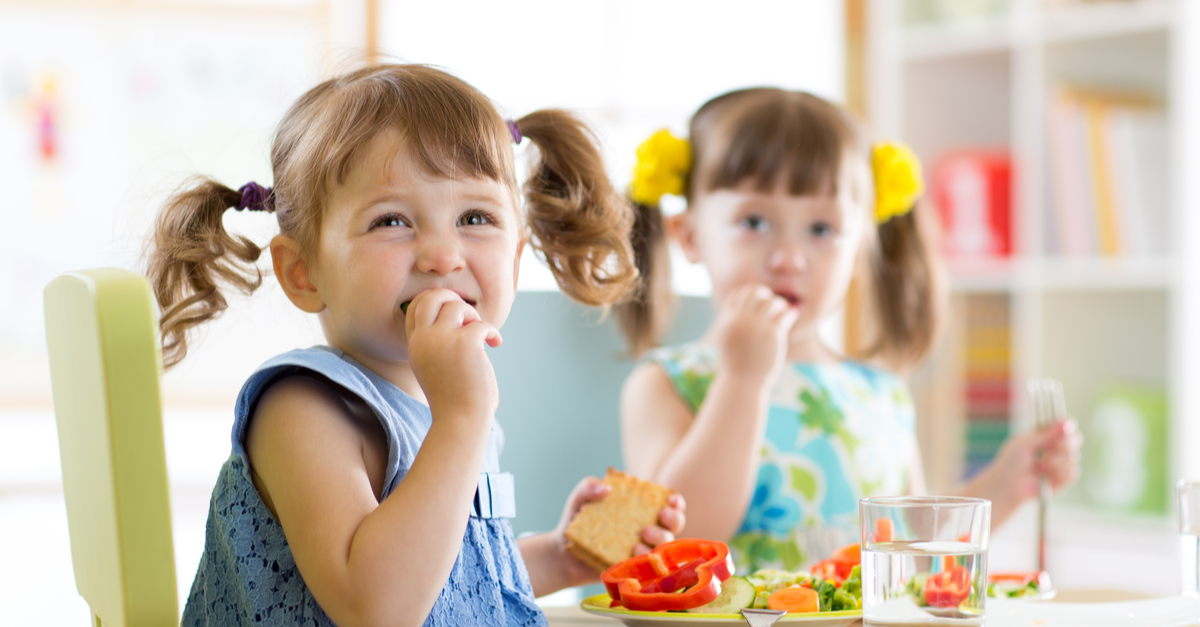
Every mom wants their little ones to do well in school. We try to provide everything they need to do so; however, some may overlook the importance of diet. Especially with our crazy busy schedules, it is often easier to cave when kids demand a happy meal. Newsflash! Nutrition has a direct effect on concentration, sleep and behavior. We need to stock the fridge and pantry with healthy, brain-boosting foods. Studies confirm what teachers have known for years: kids can eat to learn.
A healthy diet can boost brain power, improve attention span and sharpen focus – cognitive skills that children need to get through their school day, whether in a physical classroom or virtually. Adding superfoods to children’s diets will give them a mental edge while also fueling their growing bodies. Studies suggest that eating a healthy, balanced breakfast makes a difference and helps kids learn. After fasting all night, a developing body and brain need a fresh supply of glucose or blood sugar, the brain’s base food. You are not just feeding tummies; you are nourishing their brain and nervous system.
Research shows some foods can help boost attention and focus during the school day. We can tempt kids with tasty treats that are also good for them. Some of these foods improve communication between brain cells, increasing plasticity, which helps neurons or brain cells to form new connections, boosting learning and memory. Nutritionally rich foods high in fiber and protein affect learning outcomes when improving student learning through diet. Experts say it is about quality, not quantity.
Being creative when it comes to expanding menu and snacks does not have to be complicated or time-consuming – it just takes some ingenuity. Dieticians recommend starting with a balanced breakfast, such as a berry smoothie or scrambled egg, and whole-wheat toast with Nutella, which is better than sugary cereal. Lunch should be lean and green and choose snacks that are low in sugar and protein-packed – like string cheese, a handful of nuts, and a slice of turkey.
Providing and promoting healthy foods play a vital role in academic success; choosing foods with Omega-3 fatty acids contributes to brain function and cognitive skills, such as avocados, tuna, almonds, walnuts, almonds, hard-boiled eggs, beans, soybeans and flaxseed. Foods high in protein contribute to stable energy levels, enhancing focus, memory, and attention – like lean meats, yogurt, cheeses and peanut butter.
Tips to offer children a variety of healthy foods
- Keep an ample supply of healthy snacks available, visible and ready to eat; kids are more likely to eat what is handy.
- When planning meals, involve the family: get your kids involved in the process. Kids are more likely to learn how to make healthy choices and learn how what they put in the body affects them.
- Talk about good nutrition: make healthy foods the norm for family meals, but do not turn mealtime into a lecture, which will turn kids off.
- Let kids get involved in meal prep and cooking: it may take longer, but it is worth the effort. Not only does it foster nutritious choices, but it can enhance math and literacy skills.
- Take kids grocery shopping or to the farmer’s market with you and include them in selection decisions. Young kids can pick out fresh fruits and vegetables – when taking ownership, they are more likely to eat those foods.
- Let kids choose from a few nutritious options.
Easy-but-yummy snacks that will tempt even the finicky eaters
- Cut up apples and cheese.
- Peanut butter and pretzels
- Celery filled with cream cheese and raisins
- Bananas and Nutella
- Fruit kebobs with yogurt as a dip
- Mix air popcorn with dried fruit, nuts and a handful of semi-sweet chips is a high energy treat.
- Berries are always a hit and boost brain function.
- Mini pits and hummus
- Cut up veggies and ranch dip.
- Whole-grain crackers topped with cheese.
- Low sugar whole-grain cereal
- Low-fat yogurt and fruit
- Trail mix or granola with dried fruit
- Serve low-fat milk or water when offering beverages, not sugary juices and sodas.
It is essential to provide after school snacks that are low in sugar, fat and salt. Use cookie cutters to make irresistible shapes, cut fruits and veggies into pint-size portions, and include foods that crunch to keep it interesting.
The suggested USDA guidelines for 2-6-year-olds
- Milk Group 2 servings = 1 c milk or yogurt, 2 ounces of cheese
- Meat Group 2 servings = 2-3 ounces cooked lean meat, poultry or fish, ½ c of beans, 2 tablespoons of peanut butter, or 1 egg
- Vegetables 3 servings = ½ c raw or cooked, 12 c raw leafy greens
- Fruit 2 servings = ¾ c juice, ½ canned fruit, ¼ c dried fruit, 1 piece of fruit or melon wedge
Grain 6 servings = 1 slice bread, ½ c cooked rice or pasta, ½ c cooked cereal, 1 oz ready to eat cereal.

Read Next | Hire a Babysitter in the New York Metropolitan Area
Dawn Marie Barhyte is a widely published author with over a hundred articles to her credit. A former early childhood educator and co-director who continues to touch the lives of families through her writing! She lives and works in the beautiful Hudson Valley, NY with her beloved husband and rescue chihuahua dachshund.
Like what you read? JOIN the Mommybites community to get the latest on FREE online classes, parenting advice, events, childcare listings, casting calls & raffles, and our Parents With Nannies Facebook group. SIGN UP NOW!



